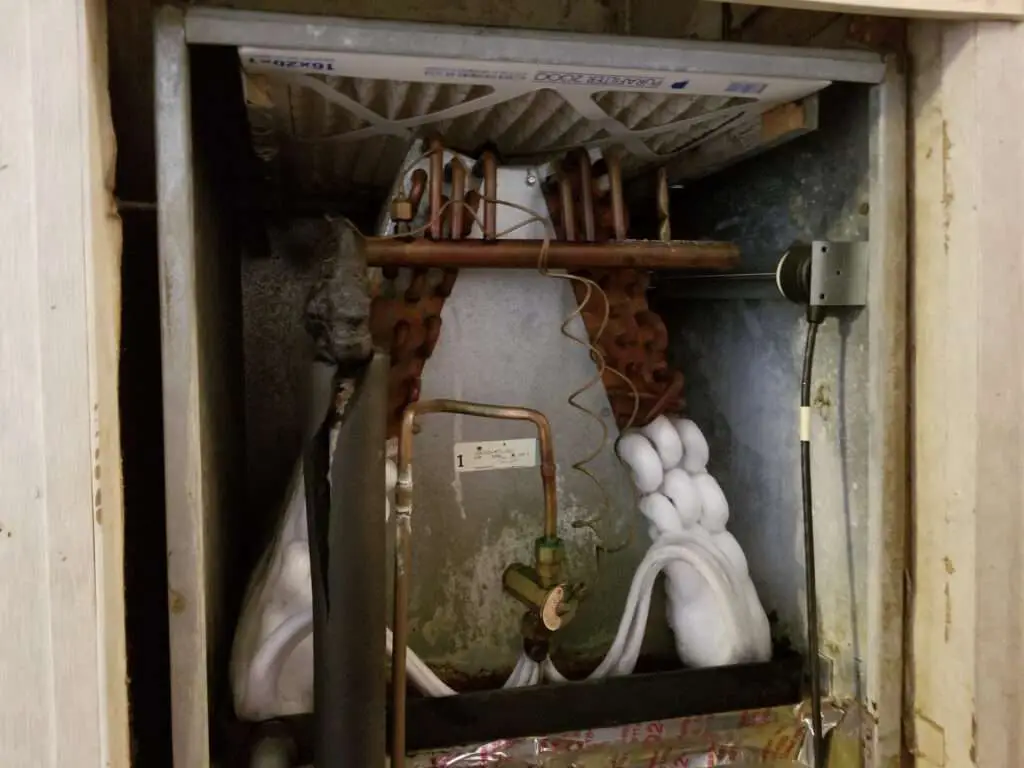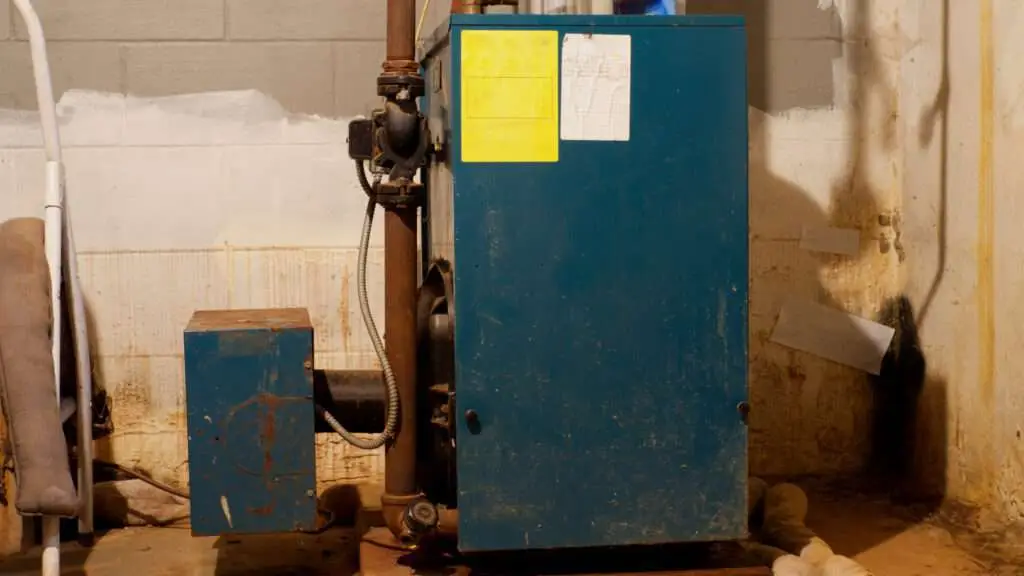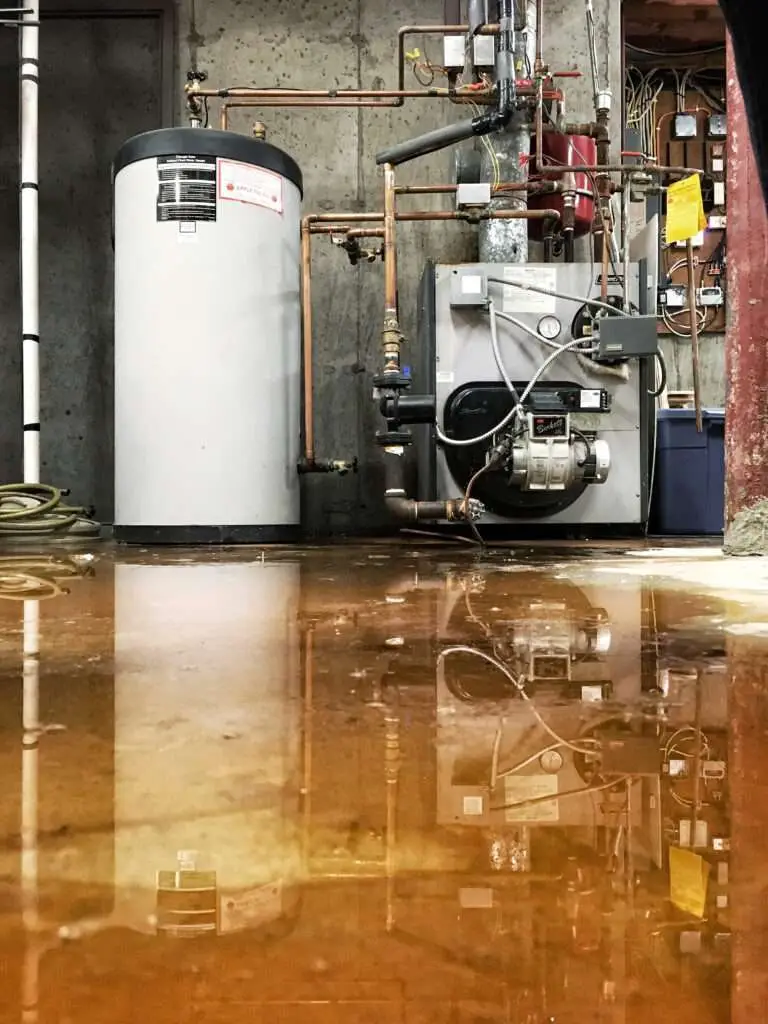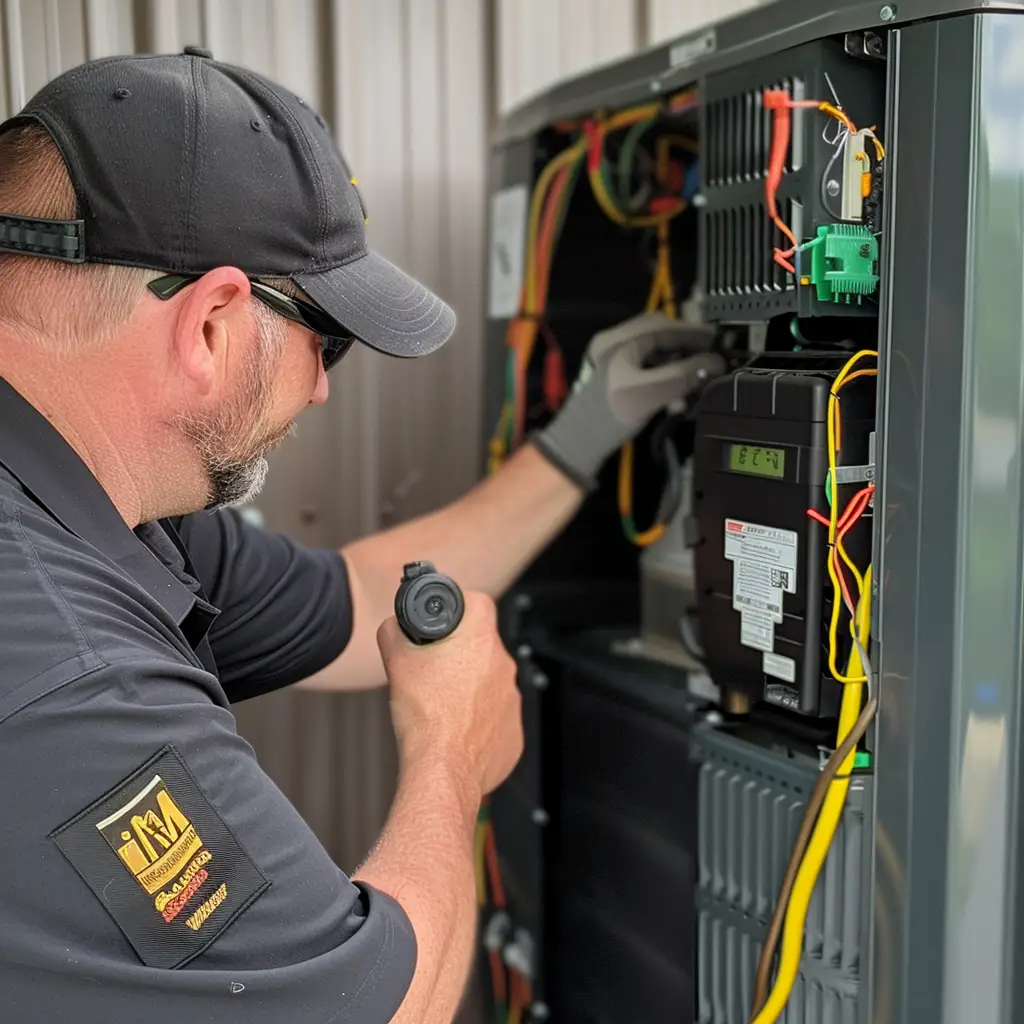If you’ve noticed water leaking from your furnace when your air conditioning unit is running, it can be a cause for concern. Not only is it a potential indication of a problem with your furnace, but it can also lead to water damage in your home.
In this blog, we’ll explore the common causes of a furnace leaking water when the AC is on, why they occur, and what you can do to repair your furnace.
What To Do If Your Furnace is Leaking?
If you notice that your furnace is leaking water when the AC is on, here are the first steps you should take to address the issue:
- Turn off the AC unit: The first thing you should do is turn off the AC unit to stop the water leak. This will also help to prevent any further damage to the unit.
- Locate the source of the leak: Look for any visible signs of a leak, such as puddles of water or wet spots on the furnace or surrounding area. This will help you determine the source of the leak and take appropriate action.
- Dry up any standing water: If there is standing water on or around the furnace, use towels or a mop to dry it up. This will help to prevent any further water damage to your home.
7 Common Causes of Furnace Leaking Water When AC is on:
The solution to a furnace leaking water when the AC is on will depend on the specific cause of the problem. Here are some potential solutions:
1. Clogged Condensate Drain

What is it and how does it work?
The condensate drain is responsible for carrying away excess moisture that is produced by the AC unit. If the drain becomes clogged, it can cause water to back up and leak from the furnace.
When the AC unit is running, it cools the air by drawing in warm air and removing the heat and moisture from it. The excess moisture is collected by the evaporator coil and then drained through the condensate drain. If the drain becomes clogged, the excess moisture has nowhere to go and will start to back up, eventually leaking out of the furnace.
Why does a clogged condensate drain cause a leaking furnace?
Clogs in the condensate drain can be caused by a variety of factors, including debris, algae, or excess dirt and dust. When these substances accumulate in the drain, they can create a blockage that prevents the water from flowing through. If left untreated, a clogged condensate drain can lead to water damage in your home and potentially cause issues with your furnace and AC unit.
How do I unclog a condensate drain?
Here are four methods you can try to unclog a condensate drain:
- Use a wet/dry vacuum: A wet/dry vacuum can be used to suction out any debris that may be blocking the drain. To use a wet/dry vacuum, first make sure that the AC unit is turned off and the drain is dry. Then, attach the hose to the vacuum and carefully insert it into the drain. Slowly move the hose around to try to suction out any debris.
- Use a chemical drain cleaner: Chemical drain cleaners are products that contain strong chemicals that can help to break up clogs in the drain. To use a chemical drain cleaner, follow the instructions on the product label. Make sure to wear gloves and protective eyewear when handling the chemical.
- Use a plumbing snake: A plumbing snake is a long, flexible tool that can be used to remove blockages from the drain. To use a plumbing snake, insert the tool into the drain and gently push it through the clog. Be careful not to push too hard, as you don’t want to damage the drain.
- Flush the drain with hot water: Another method you can try is flushing the drain with hot water. This can help to melt any debris that may be blocking the drain. To do this, fill a large pot with hot water and slowly pour it down the drain. Repeat this process a few times to help clear the clog.
If you need more guidance on how to unclog your condensate drain, watch this video by jeffostroff
2. Frozen Evaporator Coil

What is a frozen evaporator coil? How does it work?
If the evaporator coil in your AC unit becomes frozen, it can cause water to leak from the furnace. This is because the frozen coil is unable to properly drain the excess moisture that it generates.
The evaporator coil is responsible for cooling the air in your home by drawing in warm air and removing the heat and moisture from it. As the warm air passes over the cold coil, the heat is absorbed and the moisture is collected and drained away. If the coil becomes frozen, it is unable to absorb the heat from the air and the moisture is not properly drained. This can cause water to leak from the furnace.
Why does a frozen evaporator coil cause a leaking furnace?
There are several reasons why an evaporator coil may become frozen. One of the most common causes is a lack of proper airflow over the coil. If the air filter is dirty or clogged, it can restrict airflow and cause the coil to freeze. Other factors that can contribute to a frozen evaporator coil include low refrigerant levels, a malfunctioning thermostat, or a faulty blower motor.
How do I unfreeze a frozen evaporator coil?
To unfreeze it, you can try to thaw to the evaporator coil, using one of the following methods:
- Use a hair dryer: Carefully aim the hair dryer at the frozen evaporator coil and turn it on. Keep the hair dryer at least 6 inches away from the coil to prevent damaging it. Move the hair dryer around the coil to evenly thaw it out.
- Use a heat gun: A heat gun is a tool that generates high heat and can be used to thaw out the evaporator coil. To use a heat gun, hold it at least 6 inches away from the coil and move it around to evenly thaw out the coil.
- Use a space heater: If you have a space heater, you can place it near the AC unit to help thaw out the evaporator coil. Keep the space heater at least 3 feet away from the unit to prevent damaging it.
For a more detailed walkthrough on how to unfreeze an evaporator coil, check out this video by SPOC
3. Malfunctioning Evaporator Drain Pan

What is an evaporator drain pan? How does it work?
The evaporator drain pan is responsible for collecting and draining excess moisture from the evaporator coil. If the pan becomes damaged or malfunctioning, it can cause water to leak from the furnace.
When the AC unit is running, it cools the air by drawing in warm air and removing the heat and moisture from it. The excess moisture is collected by the evaporator coil and then drained away through the evaporator drain pan. If the drain pan becomes damaged or malfunctioning, it can’t properly collect and drain the excess moisture, causing it to leak out of the furnace.
Why does a malfunctioning evaporator drain pan cause a leaking furnace?
There are several reasons why an evaporator drain pan may become damaged or malfunctioning. One of the most common causes is physical damage to the pan, which can be caused by impact or wear and tear over time. Another possible cause is a malfunctioning float switch, which is responsible for triggering the drain pan to drain when it becomes full.
How do I fix a malfunctioning evaporator drain pan?
To fix a malfunctioning evaporator drain pan, you’ll need to replace it. This is a job that is best left to a professional HVAC technician. Here are the steps they will take to replace the drain pan:
- Remove the old drain pan: The technician will remove the old drain pan by carefully lifting it out of the unit. They will dispose of the old pan and prepare to install the new one.
- Install the new drain pan: The technician will install the new drain pan by carefully placing it into the AC unit. They will make sure that it is properly aligned and secured in place.
- Reconnect the AC unit: Once the new drain pan is installed, the technician will reconnect the AC unit to the power source.
- Test the AC unit: Finally, the technician will test the AC unit to make sure that it is functioning properly and that the new drain pan is working correctly.
Replacing a malfunctioning evaporator drain pan is a job that requires specialized tools and expertise. It’s important to have it done by a professional to ensure that it is done safely and correctly.
4. Damaged Condensate pump

What is a condensate pump? How does it work?
The condensate pump is responsible for pumping excess moisture from the AC unit to the outside of your home. If the pump becomes damaged or disconnected, it can cause water to leak from the furnace.
When the AC unit is running, it cools the air by drawing in warm air and removing the heat and moisture from it. The excess moisture is collected by the evaporator coil and then drained through the condensate drain. The condensate pump is responsible for pumping the excess moisture from the drain to the outside of your home. If the pump becomes damaged or disconnected, the excess moisture has nowhere to go and will start to leak out of the furnace.
Why does a malfunctioning evaporator drain pan cause a leaking furnace?
There are several reasons why a condensate pump may become damaged or disconnected. One possible cause is physical damage to the pump, which can be caused by impact or wear and tear over time. Another possible cause is a malfunctioning float switch, which is responsible for triggering the pump to turn on when the condensate drain becomes full.
How do I fix a damaged condensate pump?
To fix a malfunctioning evaporator drain pan, you’ll need to replace it. Repairing or replacing a damaged condensate pump is a job that requires specialized tools and expertise. It’s important to have it done by a professional to ensure that it is done safely and correctly.
5. Debris blocking the condensate line:

If the condensate line becomes blocked by debris, it can cause the furnace to leak water when the AC is on.
What is a condensate line? How does it work?
The condensate line is responsible for carrying excess moisture from the AC unit to the outside of your home. When the AC unit is running, it cools the air by drawing in warm air and removing the heat and moisture from it. The excess moisture is collected by the evaporator coil and then drained through the condensate drain and pumped through the condensate line. If the line becomes blocked by debris, it can prevent the excess moisture from flowing through and cause it to leak out of the furnace.
Why does debris blocking the condensate line cause a leaking furnace?
Debris that can block the condensate line includes dirt, dust, and other small particles. These substances can accumulate in the line over time and create a blockage that prevents the water from flowing through.
How do I get debris out of a condensate line?
To fix a blocked condensate line caused by debris, you can try the following methods:
- Use a wet/dry vacuum: A wet/dry vacuum can be used to suction out any debris that may be blocking the line. To use a wet/dry vacuum, first make sure that the AC unit is turned off and the line is dry. Then, attach the hose to the vacuum and carefully insert it into the line. Slowly move the hose around to try to suction out any debris.
- Use a chemical drain cleaner: Chemical drain cleaners are products that contain strong chemicals that can help to break up clogs in the line. To use a chemical drain cleaner, follow the instructions on the product label. Make sure to wear gloves and protective eyewear when handling the chemical.
- Flush the line with hot water: Another method you can try is flushing the line with hot water. This can help to melt any debris that may be blocking the line. To do this, fill a large pot with hot water and slowly pour it down the line. Repeat this process a few times to help clear the blockage.
6. Aging Furnace

An aging furnace can cause the furnace to leak water when the AC is on because the furnace may not be able to handle the amount of moisture that is produced by the AC unit.
If the furnace is aging and not functioning properly, it may not be able to properly drain the excess moisture and it can start to leak from the furnace.
To fix an aging furnace that is causing water leaks, you’ll need to have the furnace inspected and repaired by a professional HVAC technician. They will be able to properly diagnose the problem and recommend the appropriate solution. In some cases, it may be necessary to replace the aging furnace with a new one to solve the issue.





